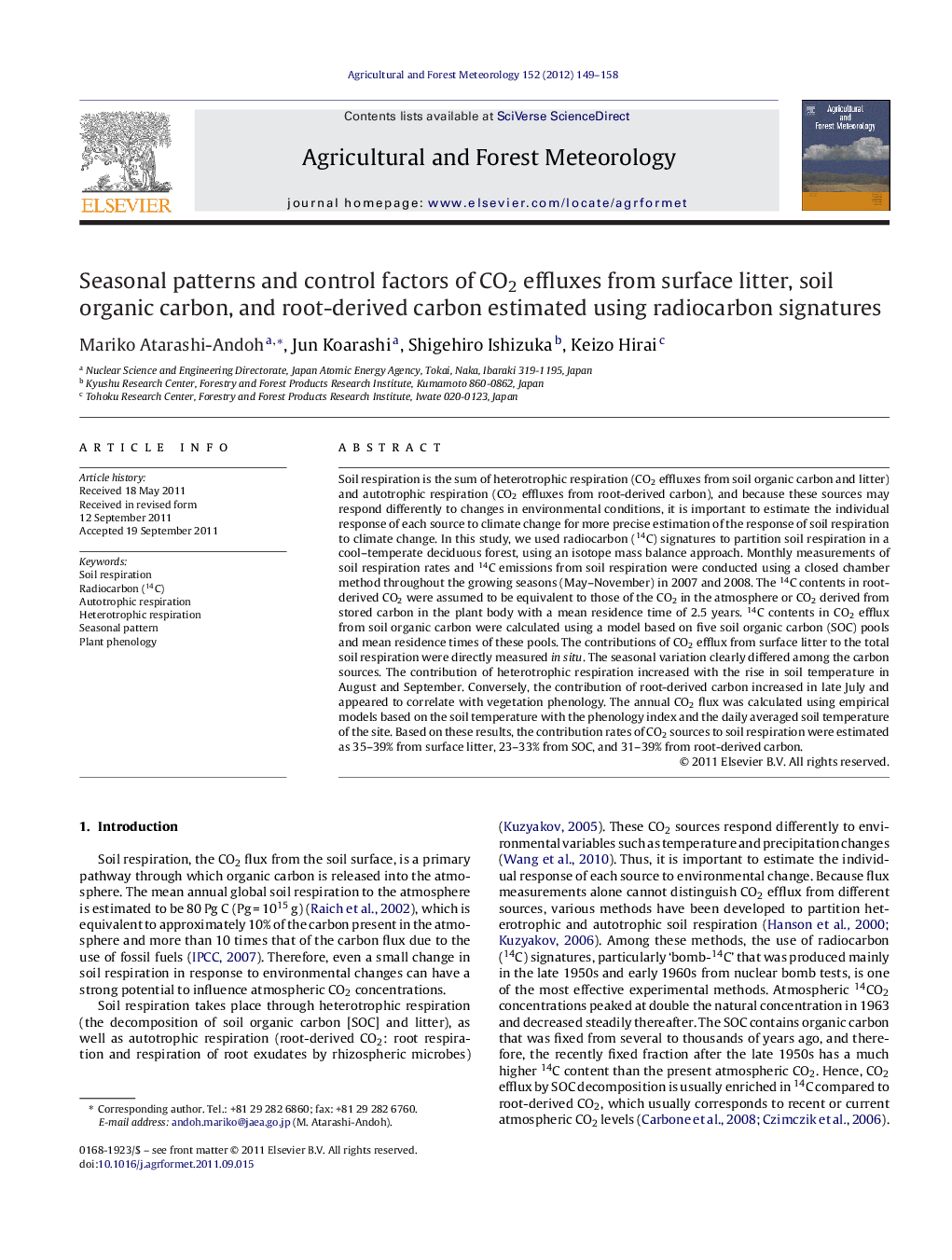| کد مقاله | کد نشریه | سال انتشار | مقاله انگلیسی | نسخه تمام متن |
|---|---|---|---|---|
| 81968 | 158364 | 2012 | 10 صفحه PDF | دانلود رایگان |

Soil respiration is the sum of heterotrophic respiration (CO2 effluxes from soil organic carbon and litter) and autotrophic respiration (CO2 effluxes from root-derived carbon), and because these sources may respond differently to changes in environmental conditions, it is important to estimate the individual response of each source to climate change for more precise estimation of the response of soil respiration to climate change. In this study, we used radiocarbon (14C) signatures to partition soil respiration in a cool–temperate deciduous forest, using an isotope mass balance approach. Monthly measurements of soil respiration rates and 14C emissions from soil respiration were conducted using a closed chamber method throughout the growing seasons (May–November) in 2007 and 2008. The 14C contents in root-derived CO2 were assumed to be equivalent to those of the CO2 in the atmosphere or CO2 derived from stored carbon in the plant body with a mean residence time of 2.5 years. 14C contents in CO2 efflux from soil organic carbon were calculated using a model based on five soil organic carbon (SOC) pools and mean residence times of these pools. The contributions of CO2 efflux from surface litter to the total soil respiration were directly measured in situ. The seasonal variation clearly differed among the carbon sources. The contribution of heterotrophic respiration increased with the rise in soil temperature in August and September. Conversely, the contribution of root-derived carbon increased in late July and appeared to correlate with vegetation phenology. The annual CO2 flux was calculated using empirical models based on the soil temperature with the phenology index and the daily averaged soil temperature of the site. Based on these results, the contribution rates of CO2 sources to soil respiration were estimated as 35–39% from surface litter, 23–33% from SOC, and 31–39% from root-derived carbon.
► Monthly estimation of CO2 sources of soil respiration was conducted using bomb-14C signatures.
► We observed large differences in seasonal patterns among sources of soil respiration.
► SOC decomposition was the most responsive to a rise in soil temperature.
► Autotrophic respiration appeared to correlate strongly with vegetation phenology.
Journal: Agricultural and Forest Meteorology - Volume 152, 15 January 2012, Pages 149–158